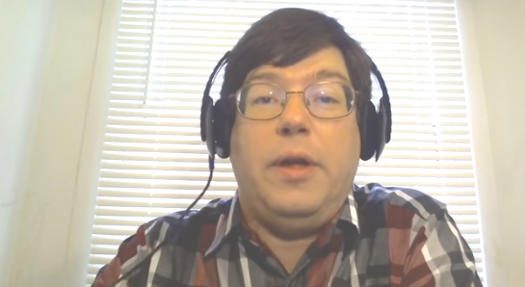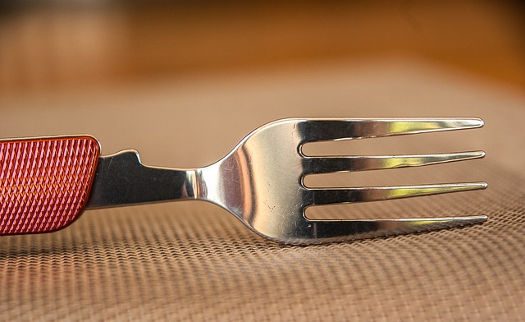Open source organizations find the methodology behind open source software development also works well in other areas of the organization as well. The Video Screening…
Posts published in “Software”
The proprietary software used by most libraries is incredibly expensive, and comes with support costs that can be even higher. Projects like Koha bring the option of a free and open source solution into play.
The Video Screening Room
Randal Schwartz, from TWiT.tv’s “FLOSS Weekly,” interviews Nicole Engard and Brendan Gallagher, about the open source Koha Integrated Library System (ILS), which originated in New Zealand in 1999. Along with being a web developer, Nicole is a prolific blogger on Opensource.com and last year was recognized by Red Hat for her significant contributions to open source advocacy.
For the past 10 years, Phil has been working at a public library in the Washington D.C.-area, helping youth and adults use the 28 public Linux stations the library offers seven days a week. He also writes for MAKE magazine, Opensource.com and TechSoup Libraries. Suggest videos by contacting Phil on Twitter or at pshapiro@his.com.
The open source development model is taking over the enterprise. Two companies that were late coming to the OSS table but which now contribute much code are Cisco and Capital One.
The Video Screening Room
This panel discussion, recorded at this year’s OSCON in Austin, Texas, with two Cisco open source folks and a Capital One person is fascinating. Learn about how enterprises are acknowledging their use of OSS and taking greater responsibility for contributing back to it. Learn how people are more often using GitHub contributions as their resume. Learn how the open model allows companies to iterate faster in a rapidly changing world. If open source is becoming the default methodology, how is this changing mindsets within the enterprise?
For the past 10 years, Phil has been working at a public library in the Washington D.C.-area, helping youth and adults use the 28 public Linux stations the library offers seven days a week. He also writes for MAKE magazine, Opensource.com and TechSoup Libraries. Suggest videos by contacting Phil on Twitter or at pshapiro@his.com.
The Heartbleed bug revealed that some important open source projects were so understaffed that they were unable to properly implement best security practices. The Linux Foundation’s Core Infrastructure Initiative , formed to help open source projects have the ability to adopt these practices, uses a lot of carrot and very little stick.
Robin “Roblimo” Miller is a freelance writer and former editor-in-chief at Open Source Technology Group, the company that owned SourceForge, freshmeat, Linux.com, NewsForge, ThinkGeek and Slashdot, and until recently served as a video editor at Slashdot. Now he’s mostly retired, but still works part-time as an editorial consultant for Grid Dynamics, and (obviously) writes for FOSS Force.
Tatiana Kochedykova If you’re looking for a free and open source replacement for the convenience and functionality offered by the likes of Google Docs and…
It’s easy to be tempted to draw a parallel between the recent fork of ownCloud by Nextcloud and The Document Foundation’s fork of OpenOffice six years ago. Slight differences are there, but they’re probably meaningless.
There are more than enough similarities between the recent forking of ownCloud to Nextcloud and the creation of LibreOffice out of OpenOffice six years ago to draw comparisons, but there are also many differences. As Yogi Berra might say, they are the same but different.
 OpenOffice, if you’ll remember, was forked by a group of developers who had been frustrated for years by roadblocks to what they saw as necessary development by Sun Microsystems, which had created the open source project out of Star Office, a proprietary suite it purchased in the late 1990s. When the situation worsened after Oracle took ownership, the developers created The Document Foundation, forked OpenOffice and released it as LibreOffice under the GPL. Improvements became evident right away, with much of the early work centering on cleaning up the bloated code base.
OpenOffice, if you’ll remember, was forked by a group of developers who had been frustrated for years by roadblocks to what they saw as necessary development by Sun Microsystems, which had created the open source project out of Star Office, a proprietary suite it purchased in the late 1990s. When the situation worsened after Oracle took ownership, the developers created The Document Foundation, forked OpenOffice and released it as LibreOffice under the GPL. Improvements became evident right away, with much of the early work centering on cleaning up the bloated code base.
Christine Hall has been a journalist since 1971. In 2001, she began writing a weekly consumer computer column and started covering Linux and FOSS in 2002 after making the switch to GNU/Linux. Follow her on Twitter: @BrideOfLinux
Sometimes applications have capabilities that go beyond their primary use. Our contributing video editor found this excellent video tutorial on editing videos in Blender, an app that’s primarily used for creating animated films.
The Video Screening Room
Blender is well-known for its 3D animation features, but did you know it also contains a very fine video editor? This explanatory screencast shares a lot of tips and tricks. I especially enjoyed when the screencaster made mistakes and then explained them. That can add a lot of value to a screencast. In fact, I’d pay good money for mistakes.
For the past 10 years, Phil has been working at a public library in the Washington D.C.-area, helping youth and adults use the 28 public Linux stations the library offers seven days a week. He also writes for MAKE magazine, Opensource.com and TechSoup Libraries. Suggest videos by contacting Phil on Twitter or at pshapiro@his.com.
Companies that traditionally focused on proprietary software are now playing catch up in order to compete by utilizing open source development. The Video Screening Room…









